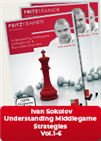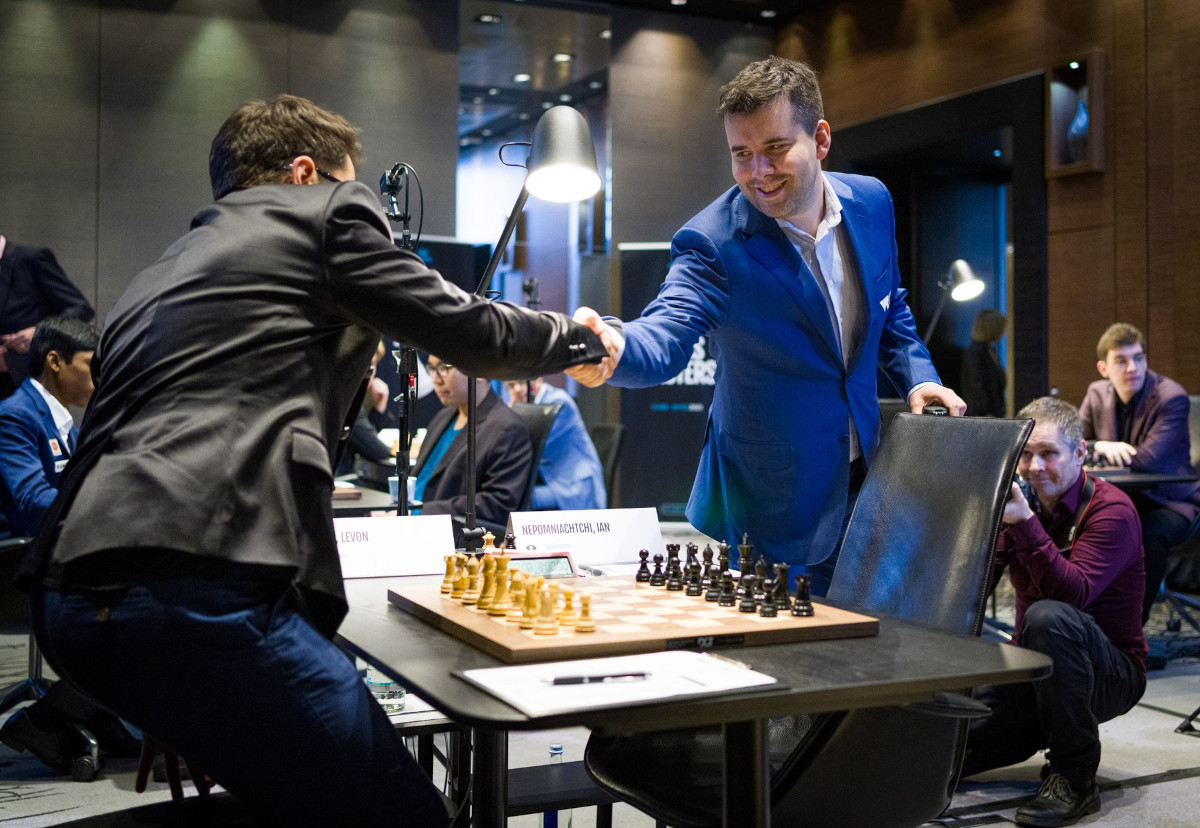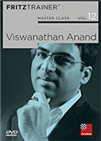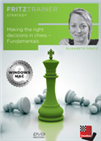Black finally wins
The first two games that saw the player with the black pieces taking a full point at the WR Chess Masters were played in Thursday’s seventh round. Incidentally, this was also the most consequential round in the event so far. After Levon Aronian had shown remarkable poise throughout to get a full-point lead, the tables were suddenly turned: Aronian (with white) lost to Ian Nepomniachtchi, while second-placed Gukesh defeated Andrey Esipenko (with black).
With two rounds to go, these results left Aronian and Gukesh sharing first place on 4½ points each, only a half point ahead of the dangerous duo of Nepomniachtchi and Wesley So. Curiously, all the six remaining players are sharing 5th to 10th place with 3 points each.
 In this Videocourse we deal with different aspects of the middlegame which are important to study and improve your general understanding of chess structures.
In this Videocourse we deal with different aspects of the middlegame which are important to study and improve your general understanding of chess structures.Gukesh’s win, his second of the tournament, allowed him not only to catch Aronian in the lead but also to climb to the 20th place in the live ratings list. He and Nodirbek Abdusattorov, who was inches away from winning the Tata Steel Masters, have created a bit of a gap between them and other top juniors (i.e. Hans Niemann, Arjun Erigaisi and Vincent Keymer) in the rankings, albeit Alireza Firouzja still stands tall as the highest-rated junior player in the world.
In round 8, Gukesh will play white against Jan-Krzysztof Duda, while Aronian will have the black pieces against Esipenko. And finally, in a seemingly scripted tournament conclusion, the current co-leaders will face each other in Saturday’s ninth round.

The calm before the storm — Ian Nepomniachtchi smilingly shakes Levon Aronian’s hand | Photo: Lennart Ootes
Esipenko 0 - 1 Gukesh
Out of a Catalan, one of Esipenko’s biggest weapons as of late, it was Gukesh who first deviated from theory. He had not looked at this specific line in his preparation, though, so he found this new recourse over the board, after a 15-minute think.
Although engines really like White’s position here, Gukesh was really proud of 13...Ng4, when alternatives such as 13...Re8 or 13...b5, both suggested by the computers, are not as challenging tactically for the white player.
Moreover, Esipenko was evidently surprised, since he spent almost 45 minutes before replying with 14.bxc4. Surely he was looking at 14.Bc3, a move that was being analysed by commentators Yasser Seirawan and Elisabeth Paehtz.
An additional psychological factor, which turned out to be crucial in the game, was the fact that Esipenko considered Gukesh’s novelty to be a concession, since he had not seen it while preparing for the game. Five moves later, this is likely to have played a role in the Russian’s decision to push his f-pawn.
In an excellent post-game interview, Gukesh told Seirawan that he thought 19.Nb3 was White’s best move in this position. And he was right — Esipenko’s 19.f4 was overly ambitious, as if he wanted to justify his opening play, which entailed the sacrifice of the c-pawn.
Shortly after, Black emerged a pawn up and, what is more important, White’s king was at least as vulnerable as its black colleague on g8.
Esipenko continued to look for the initiative, but his active attempts backfired tactically, as Gukesh eventually managed to neutralize White’s threats on the dark-squared long diagonal.
Once 25...Bd4 was played, things went from bad to worse for White. In what followed, Gukesh smoothly gave up his pawn to take the initiative, and completely nullified his opponent’s counterchances with a good-looking pawn push.
 This DVD allows you to learn from the example of one of the best players in the history of chess and from the explanations of the authors how to successfully organise your games strategically, and how to keep your opponent permanently under pressure.
This DVD allows you to learn from the example of one of the best players in the history of chess and from the explanations of the authors how to successfully organise your games strategically, and how to keep your opponent permanently under pressure.35...f5 received high praise from Seirawan, as the move asserts full control over the position. White is stuck, which prompted Esipenko to resign after 36.Kh2 Qd2.

Dommaraju Gukesh | Photo: Lennart Ootes
Aronian 0 - 1 Nepomniachtchi
Much like the aforementioned game, this was also a tense strategic dispute that turned into a highly enjoyable tactical struggle. Out of a Queen’s Gambit Declined, Aronian showed that he would have been satisfied with a draw given the tournament situation.
The players had repeated the position twice already, and 23...Bd8 would have been an immediate draw by threefold repetition. However, while going back and forth, Nepo was thinking about the consequences of launching forward with 23...g5, which he eventually decided to play — luckily for the spectators.
Curiously, Aronian mistakenly claimed a repetition, which surprised Nepo, but also informed him about his opponent’s intentions.
As the game progressed, the queen-and-bishop dance on c5-b6 and e7-d8 took place three more times. Nepo was gaining time on his clock to calculate the most accurate way to create trouble for his opponent via a kingside expansion.
The Russian eventually managed to push his f-pawn to the fourth rank, creating more tension in the position, and shortly before the first time control was reached, Aronian faltered in a highly volatile position.
37.Re1 was not cautious enough (37.Kh1 or 37.Rd1 were better alternatives), as it allowed 37...Ne5, and White already needs to be very careful — so much so that 38.Nd4 turned out to be a decisive mistake.
According to Nepo, what Aronian probably had missed is that after 38...Bh3 39.Bf1, Black’s 39...Nf7 is really strong.
The queen is under attack on e6 and the bishop on f2 is overloaded — it cannot defend both the rook on e1 and the knight on d4 at the same time. There followed 40.Qxd5 Rxe1 41.Bxe1 Bxd4+ 42.Kh1 Bc8, and Black emerged with an extra knight for a pawn.
 In a total of 6 chapters, we look at the following aspects: the right decision based on tactical factors, decisions in exchanges and moves, complex and psychological decisions in longer games and in defence.
In a total of 6 chapters, we look at the following aspects: the right decision based on tactical factors, decisions in exchanges and moves, complex and psychological decisions in longer games and in defence.Tactical precision was required to convert the advantage as Aronian continued to create threats in a complex position, but Nepo was more than up to the task. After uncharacteristically drawing his first six games in Düsseldorf, the Russian is now only a half point behind the leaders with two rounds to go.

Ian Nepomniachtchi interviewed by Elisabeth Paehtz | Photo: Lennart Ootes
Results - Round 7
Standings - Round 7
All games
Links


























